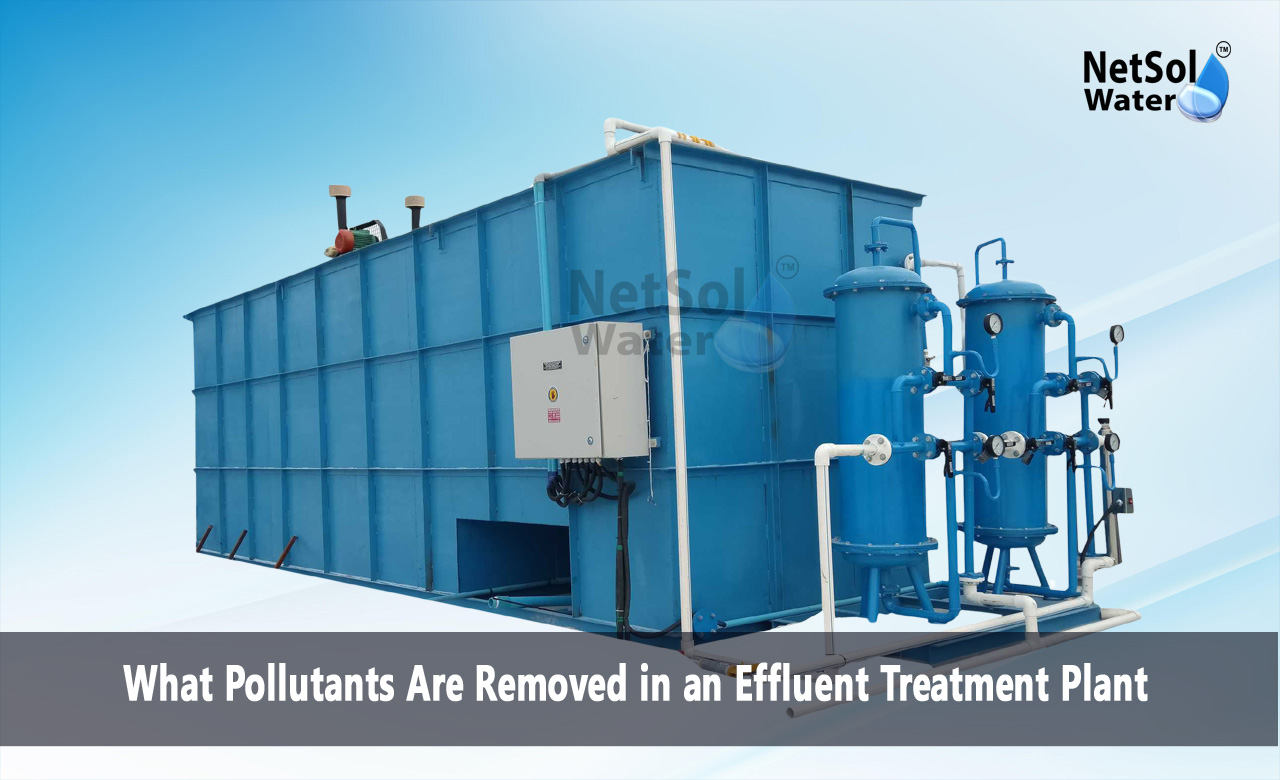What Pollutants Are Removed in an ETP Plant?
Effluent treatment plays an important role in protecting water and living systems. Netsol Water leads in designing systems that clear harmful substances from industrial discharge. In many factories wastewater flows with particles and toxins that pose risks. A reliable plant handles this water with precision and care. Netsol Water applies proven methods in each treatment stage. Effluent treatment brings clean water back to the environment. Netsol Water guides industries toward safe discharge of treated water.
Removal of Suspended Solids
High levels of solids darken water and harm aquatic life. Let us have a look at some main processes that clear these particles.
Physical Sedimentation
Solid particles settle under gravity in a large tank. Clear water rises above and flows out. The settled matter forms sludge at the bottom. Treatment plants remove that sludge for further processing.
Filtration Techniques
After sedimentation water passes through layers of sand or gravel. Those layers trap any remaining particles. Plants then backwash filters to clear the trapped solids. This step ensures smooth operation.
Next the water moves on to treat dissolved pollutants.
Read: Effluent Treatment Plant Manufacturer
Removal of Organic Matter
High organic load can deplete oxygen in rivers. This harms fish and other life. Let us have a look at some processes that break down organic matter.
Aerobic Biological Treatment
Microbes breathe oxygen to feast on organic compounds. They convert complex matter into harmless carbon dioxide and water. Designers keep oxygen levels high with mixing devices.
Anaerobic Digestion
In the absence of oxygen other microbes digest organic waste. They produce biogas that can fuel boilers or generators. This step reduces sludge volume and creates useful energy.
After microbes finish their work solids settle again before the next step.
Removal of Nutrients
Excess nutrients cause algae blooms in water bodies. Blooms block sunlight and poison the ecosystem. Let us have a look at some methods that cut down nitrogen and phosphorus.
Nitrification and Denitrification
Bacteria change ammonia into nitrate in one tank. Then other bacteria convert nitrate into harmless nitrogen gas. This two part process stops nutrient pollution.
Chemical Precipitation
Phosphorus binds with chemicals like iron or aluminium. The bound compound settles out of the water. Plants then remove the settled material as sludge. Once nutrients drop to safe levels water moves onward for finer cleaning.
Removal of Pathogens
Disease causing organisms pose serious health hazards. This section shows how plants kill or remove them. Let us have a look at some disinfection methods in use.
Chlorination: Plants add a small dose of chlorine. It inactivates bacteria and viruses quickly. Operators control the dose to avoid excess residual.
UV Irradiation: Ultraviolet light damages the DNA of pathogens. It leaves no chemical residue in the treated water. This method works well in clear water after solids and organics are removed. After disinfection water meets strict safety guidelines.
Removal of Heavy Metals
Toxic metals can harm people and nature at low levels. This section covers how treatment plants pull out these toxic elements. Let us have a look at some common techniques to capture metals.
Chemical Precipitation for Metals
Chemicals like lime raise the pH and cause metals to form solids. Those solids settle out and form a metal rich sludge. Operators then handle that sludge safely.
Ion Exchange
Water passes through a resin that swaps harmless ions for metal ions. The resin traps metals and releases safe ions back to the water. Plants regenerate the resin when it fills up. With metals removed water no longer poses a threat.
Conclusion
The pollutants removed in an effluent treatment plant cover solids, organics, nutrients, pathogens and metals. Netsol Water leads in crafting solutions that address each pollutant with proven methods. Clean water supports health, wildlife and industry growth. If you want to learn more about pollutants removed in an effluent treatment plant please get in touch today. We offer expert advice and custom solutions. Request a consultation to find the best system for your needs.
Contact Netsol Water at:
Phone: +91-9650608473, Email: enquiry@netsolwater.com



